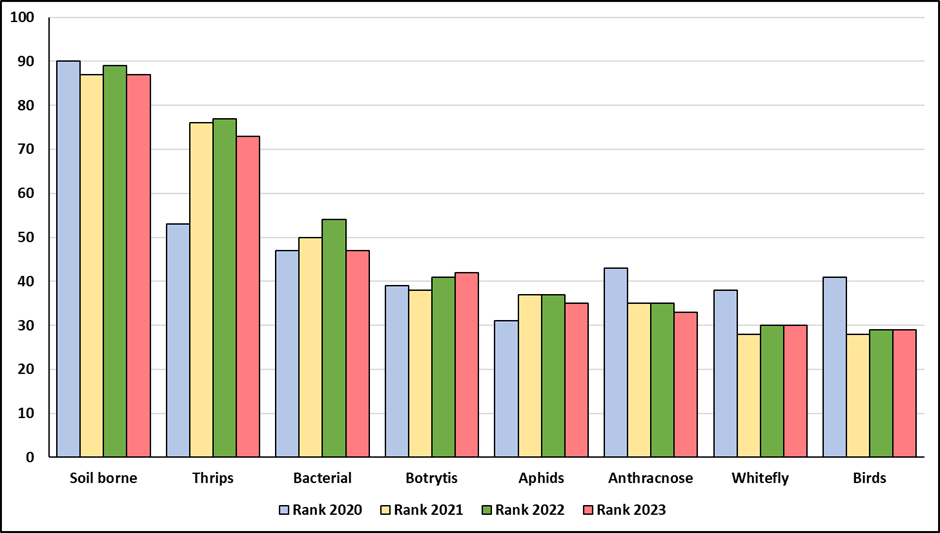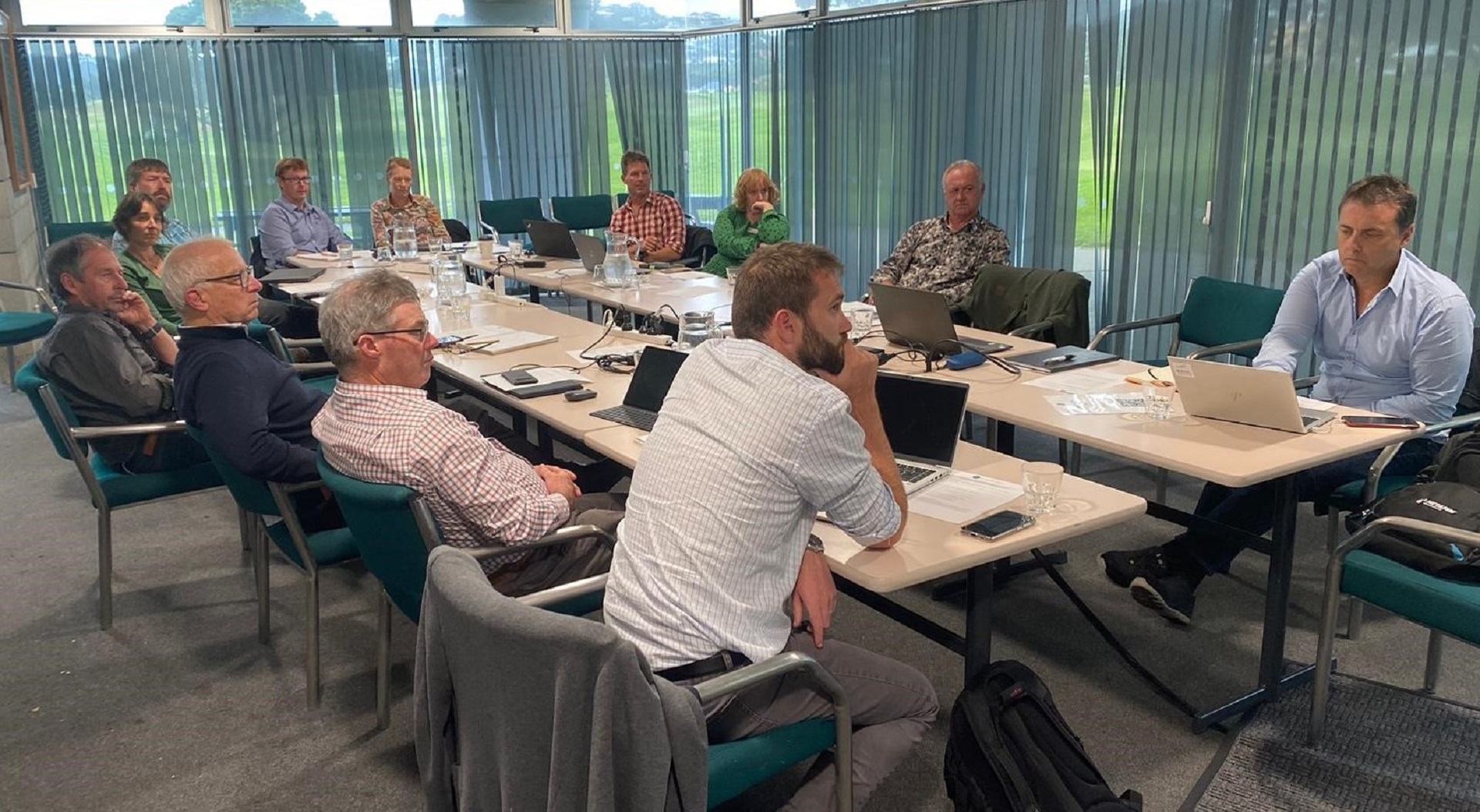Soilborne diseases and thrips remain the two biggest gaps in crop protection programmes for plant-based food growers, analysis from this year’s A Lighter Touch Gaps Workshop has found.
The annual workshop was held in early May and involved representatives of all 15 A Lighter Touch product group partners. The workshop, now in its fourth year, is designed to help product groups identify their most significant crop protection issues and prioritise them in terms of importance to their sector. It also helps define pests and diseases that are common to multiple sectors. This work assists direct the focus of A Lighter Touch projects seeking new crop protection tools for growers.
While the common priority gaps for new crop protection tools have remained consistent over the past four years as shown by the table below, there are some areas of change for some sectors.
Common Interest Gaps- 2020-2023

Changes in the gaps analysis for 2023 by sector were:
- Strawberries – thrips has increased in priority for this sector;
- Wine grapes – Downy mildew and Mealybug have both increased in priority for the viticulture sector;
- Arable – rust is now a significantly increased priority for wheat crops and Black grass for cereal crops;
- Buttercup squash – Caterpillars are becoming a more significant issue requiring attention;
- Persimmon – Lepidoptera have decreased in importance for this sector;
- Onions – Stemphylium is newly identified as a highly ranked threat for onion growers;
- Passionfruit – Fusarium continues to be the biggest problem facing growers, with no control options, and the sector losing growers and vines;
- Processed vegetables – Fall armyworm is a recently arrived and highly ranked pest requiring monitoring for sweet corn;
- Summerfruit – Recent bacterial disease infections have been identified and are now a highly ranked threat for cherry growers;
- Tomatoes – Tomato potato psyllid, mites and the PepMV virus all decreased in priority, while thrips, bacterial canker and botrytis all increased.
- Vegetables – previously identified pests and diseases for lettuce, brassicas, sweet- corn, pumpkins, melons and spinach were assessed as reducing in importance, while for kumara tropical and fall armyworm remain high priorities.
A Lighter Touch and its product group partners have projects running around many of these pests and disease and continue to look for new control options.
Sharing knowledge and resources
The workshop is also a forum to share knowledge and resources about topics of interest to various sectors. Presentations at this year’s Gaps Workshop included:
- Chris Thompson from Bioforce speaking about the availability, commercialising and best fit of Biological Control Agents.
- ALT Technical Lead Jeff Smith sharing an overview of ALT’s proposed Biohub project, an information portal for growers to understand the impact of their agrichemical use on beneficial species.
- Sally Anderson and Matt Carter giving an overview of the toolkit for biodiversity planting in perennial crops. The culmination of a two year A Lighter Touch project in citrus orchards, the toolkit is a set of resources available on the ALT website providing a “how to” for growers on under-canopy beneficial planting in perennial crops.
For more information about any of this work, and to keep up to date with what’s new in the ALT programme, you can sign up to our newsletter here.
